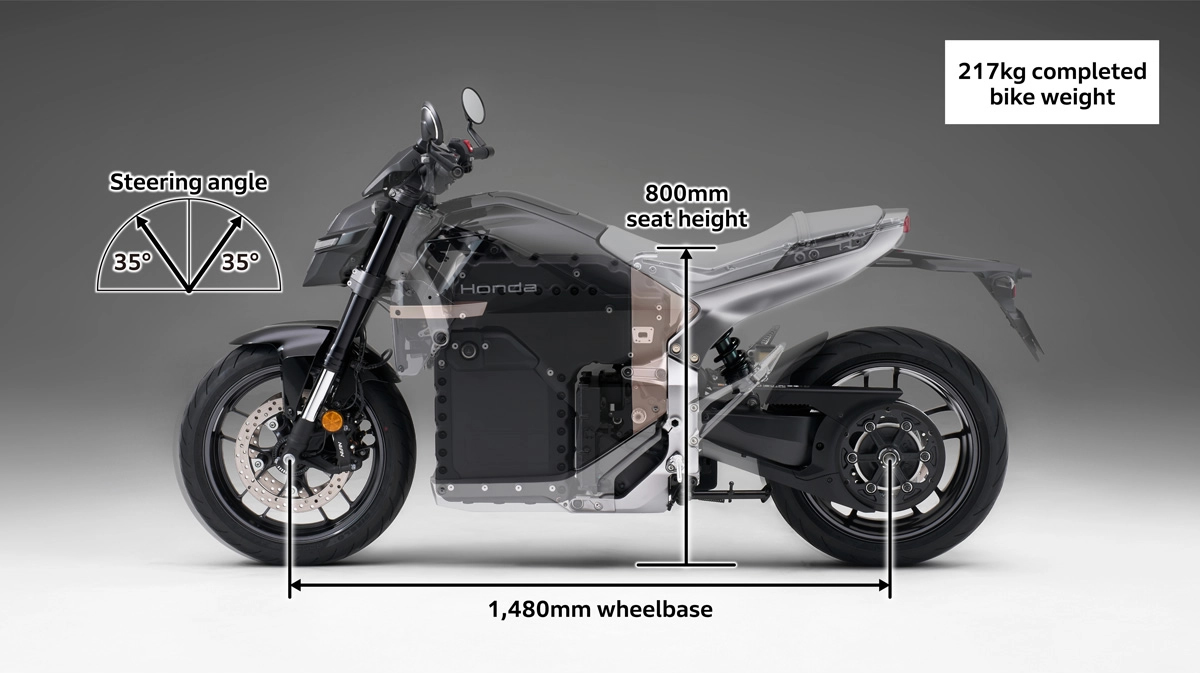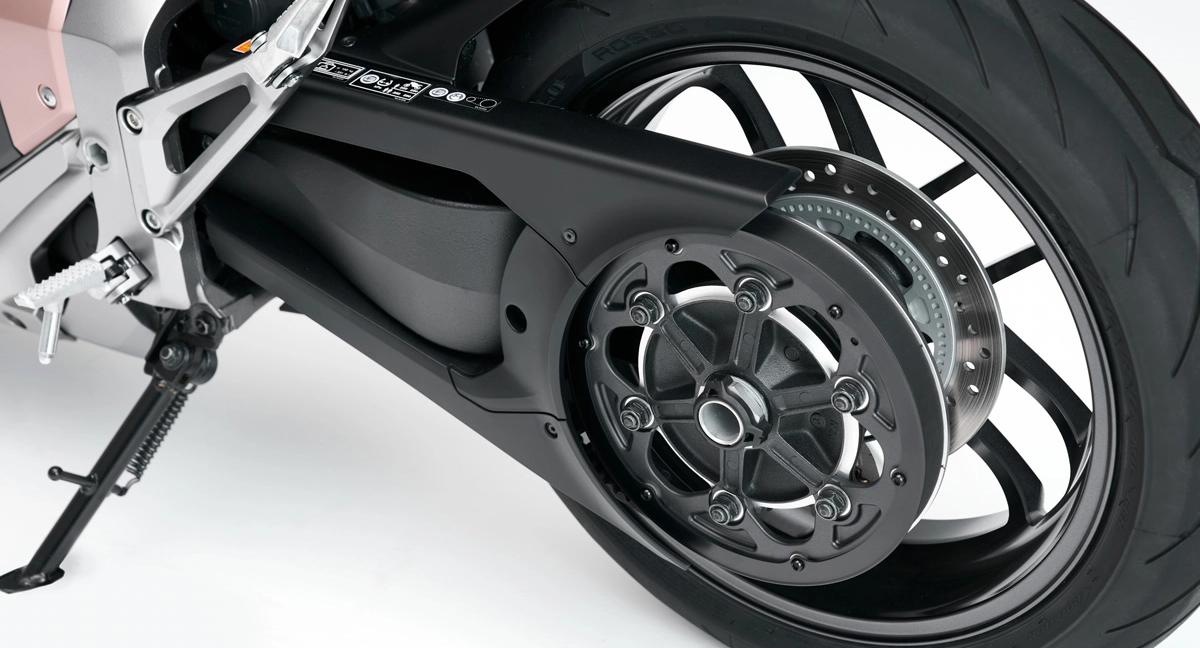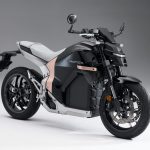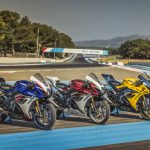

Honda’s First Global Electric Pivot & It’s Position in the FUN Motorcycle Segment
Honda’s Electric Pivot and the WN7 Mandate
The launch of the Honda WN7, unveiled publicly at EICMA 2025 in Milan, Italy, represents more than a mere product introduction; it is a critical strategic declaration defining the company’s commitment to the electrified future of the motorcycle industry. This model is positioned as the first electric naked motorcycle in the “FUN” category developed under Honda’s new electric motorcycle brand direction, signifying a major pivot from compliance-focused light vehicles toward the high-demand global leisure market.
The Context of Carbon Neutrality & the 2040 Roadmap
Honda has set ambitious environmental targets, aiming to achieve carbon neutrality across all products and corporate activities by 2050. A core pillar of this future environmental strategy is the commitment to ensuring all motorcycle products are carbon-neutral by the 2040s. The introduction of the WN7 is a significant step forward in this roadmap, signaling the acceleration of the company’s global expansion into the electric motorcycle market, positioning 2024 as the first year of this major push. The WN7 is not a regional experiment but a global model, underscored by the decision to produce it at Honda’s Kumamoto Factory, the company’s global hub for motorcycle production. Honda plans to introduce the model sequentially to global markets where the electrification shift is advancing.
The design of the WN7, however, reveals a pragmatic approach to market entry rather than a direct challenge for segment-leading performance. The selection of a 9.3 kWh battery platform and a corresponding range of 140 km (87 miles) suggests a prioritization of development speed, cost containment, and compliance with the highly regulated European A2 licensing class, rather than pursuing a benchmark-setting range or raw power figure. If the goal had been outright performance leadership, the battery capacity would likely need to match or exceed the 10.5 kWh or greater packs used by primary rivals. This choice indicates a strategic focus on building robust infrastructure and leveraging the company’s brand reliability and distribution network, effectively entering the market with a scalable product before engaging in a full-scale specification war.

The "Be the Wind" Philosophy & Design Intent
The foundation of the WN7 is its grand concept: “Be the Wind, Listen to the Sounds of Nature, and Feel the Earth”. This development concept, from which the “W” in WN7 is borrowed, prioritizes an immersive, quiet riding experience unique to electric vehicles. By eliminating the noise of an internal combustion engine (ICE), the WN7 allows riders to experience the sounds and atmosphere of their surroundings—such as conversations or the rustling of leaves—which are typically obscured by gasoline engines. This design philosophy aims to deliver the joy of freely gliding through the air, embodying the exhilarating feeling of riding like the wind through agile handling and smooth, strong torque acceleration.
The physical design execution supports this vision. The naked model’s design language is focused on refining functionality and expressing essence, featuring seamless, smooth surfaces in areas the rider touches, while maintaining a distinctive and powerful silhouette. Notably, the WN7 debuts several design elements intended to establish a common visual identity for Honda’s future electric portfolio. This includes a signature horizontal light bar at the front and a dedicated EV color theme: a black-based body accented with gold component parts. The strategic decision to establish a unique, recognizable visual language early on—such as the horizontal light bar—suggests the WN7 is intended to be the definitive aesthetic template for Honda’s future electric lineup, ensuring instant brand recognition in the rapidly growing EV motorcycle sector.
Engineering Deep Dive: Architecture, Powertrain & Chassis Innovation
Honda has leveraged over 75 years of motorcycle development expertise to create the WN7, emphasizing lightness and ease of handling. The most significant innovation lies in its foundational architecture, a departure from conventional motorcycle design.
The Frameless Chassis: Structural Integration
The WN7 employs a frameless structure, a radical architectural choice. Unlike traditional motorcycles that rely on a full frame connecting the front and rear sections, the WN7 utilizes the centrally positioned, cast aluminum battery case as a structural element forming part of the main chassis. The head pipe (supporting the steering) and the pivot bracket (supporting the rear suspension) are connected directly to this central power unit.

This design offers significant engineering advantages, primarily achieving weight reduction, optimizing mass centralization, and substantially stiffening the structure. This emphasis on structural rigidity is critical for delivering the agile handling Honda claims. However, utilizing the battery case as a structural element introduces complexity regarding maintenance and repairability. Since the battery unit is integral to the vehicle’s frame, servicing or replacing the pack likely requires substantial structural disassembly, which could increase long-term ownership costs compared to designs using modular or frame-mounted, non-structural batteries. This trade-off inherently prioritized dynamic performance and initial manufacturing efficiency over potential ease of maintenance, making the structural battery an engineering commitment.
Powertrain Configuration & Thermal Management
The WN7 is propelled by a newly developed, compact, and lightweight motor featuring liquid cooling and an integrated inverter unit. This liquid cooling system is a critical technical detail, signifying Honda’s confidence in the motor’s ability to sustain high output and resist thermal throttling during extended use, which is essential for highway cruising or sustained bursts of acceleration.
The integrated unit delivers power through a newly designed gearbox to a belt-drive system, chosen specifically to drive the rear wheel while contributing to the overall quiet operation – a necessity for achieving the “Be the Wind” experience.
Performance metrics are substantial: the motor achieves a maximum output of 50 kW (67 hp). Even more impressive is the maximum torque output of 100 Nm (74 lb-ft), which is instantly available and comparable to that of a 1,000cc ICE motorcycle, promising explosive, powerful acceleration off the line. The claimed wet weight (kerb weight) of the motorcycle is 217 kg (479 lb).
Dynamics and Handling Hardware
The WN7’s running gear is tailored to support its naked bike classification and agile handling requirements. The front suspension utilizes a 43mm USD (upside-down) telescopic fork, while the rear features a monoshock with adjustment limited to preload. The braking system comprises two 296mm front discs paired with two-piston Nissin calipers, complemented by a single rear disc and caliper. This hardware is managed by sophisticated electronics, including Cornering ABS and Cornering Traction Control, meeting modern safety expectations for a premium middleweight motorcycle.

The geometry of the chassis, with a 25.0° rake and 99mm trail, has been specifically tuned for low-speed agility, optimizing the WN7 for its primary role in urban environments. Ergonomically, the riding position is slightly more upright than comparable ICE naked bikes, featuring lower bars and mildly dropped foot pegs, aiming for a relaxed and urban-friendly posture that enhances control in city traffic. The wheelbase is specified at 1,480 mm (58.3 in.), and the seat height is manageable at 800 mm (31.5 in.).
The Performance Paradox: Power, Licensing & the Range Compromise
The WN7’s technical specification sheet presents a paradox typical of manufacturers navigating regulatory requirements while trying to deliver “fun” performance. The data reveals a clear strategic choice to prioritize European license accessibility over maximizing power and range metrics.
Clarifying the Power Output & Licensing Strategy
The WN7 utilizes its high torque and peak power selectively. While the maximum output is 50 kW (67 hp), aligning with the performance feel of a 600cc ICE motorcycle, the model’s official continuous output is rated at 18 kW (approximately 24 hp).
This continuous power rating is a calculated regulatory decision. By restricting the continuous output to 18 kW, Honda ensures the WN7 fits precisely into the high-volume A2 motorcycle license class across Europe. A2 regulations typically limit vehicles to a peak output of 35 kW (47 hp). Honda’s engineering allows the motorcycle to deliver substantial, thrilling power (67 hp peak and 100 Nm of torque) while remaining legally accessible to a vast demographic of intermediate riders. Furthermore, an even lower-powered 11 kW continuous output variant is offered, catering to riders holding the entry-level A1 license. This strategic compliance instantly grants Honda access to a massive addressable market segment that dedicated high-performance EV competitors often struggle to penetrate with their flagship models.
Battery Capacity & Range Metrics
The WN7 is equipped with a newly developed, fixed lithium-ion battery unit featuring a capacity of 9.3 kWh. This capacity is notably smaller than premium offerings from competitors like Zero and LiveWire. The claimed cruising range, measured under WMTC testing standards, is 140 km (87 miles) on a full charge, with other estimates placing the range at over 130 km (83 miles). This range is deliberately engineered for city and local fun riding, reflecting Honda’s commitment to achieving a dynamic performance feel without burdening the bike with the massive, heavy batteries required for extreme range (e.g., exceeding 400–500 km).
Charging Infrastructure: The Competitive Advantage
The moderate range limitation is significantly mitigated by Honda’s commitment to high-speed charging infrastructure. The WN7 is compatible with both CCS2 (Combined Charging System Type 2) fast charging and Type 2 normal charging standards. The adoption of the CCS2 standard is a critical differentiator in the competitive landscape, showing a high level of infrastructural commitment from the manufacturer.

The fast-charging performance is highly efficient: the battery can be replenished from 20% to 80% in approximately 30 minutes. This 30-minute rapid charge capability fundamentally transforms the perception of the 87-mile range. For an urban commuter or weekend rider, this rapid top-up minimizes range anxiety, allowing riders to gain highly usable range during a standard coffee break or lunch stop. This charging capability also validates Honda’s decision to forego its proprietary Power Pack e: swappable battery system for this platform. Normal charging via a Type 2 connection fully charges the battery from 0% to 100% in under 2.4 hours. For home use, connecting to a standard household outlet via a 6 kVA wall box is estimated to charge the battery completely in under three hours.
| Feature Category | Specification / Value | Significance |
|---|---|---|
| Development Concept | Naked model in the FUN category | Defines Honda’s new EV strategy |
| Peak Power Output | 50 kW (67 hp) | 600cc equivalent performance |
| Continuous Power Output | 18 kW (24 hp) | A2 license compliance factor |
| Peak Torque | 100 Nm (74 lb-ft) | Provides strong acceleration |
| Battery Capacity (Fixed) | 9.3 kWh (Lithium-ion) | Prioritizes weight/handling over maximum range |
| Claimed Range (WMTC) | 140 km (87 miles) | Urban-focused range target |
| DC Fast Charging Standard | CCS2 | Major competitive differentiator |
| Fast Charging Rate (20%-80%) | ≈ 30 minutes | Key for urban usability |
| Kerb Weight (Wet) | 217 kg (479 lb) | Engineered for easy handling |
| Seat Height | 800 mm (31.5 in.) | Standard naked bike ergonomics |
Rider-Centric Technology & Usability Features
Honda has incorporated a suite of technologies aimed at enhancing the unique smooth ride and usability distinct from ICE models, while ensuring high levels of riding enjoyment and control.
Cockpit & Connectivity
The rider interface centers around a five-inch full-colour Thin-Film Transistor (TFT) screen. This display provides crucial riding data and hosts exclusive EV menus tailored to electric operation. The WN7 incorporates Honda RoadSync connectivity, allowing for smartphone integration and navigation, enhancing its appeal to modern, tech-savvy commuters and riders.
Visibility is further ensured by full LED lighting, front and rear, which includes the signature horizontal light bar.
Control & Manoeuvrability
Key design elements have been implemented to support comfortable and confident riding, particularly in stop-and-go conditions.
One such feature is the Deceleration Selector, which allows the rider to adjust the level of regenerative braking force. This capability is crucial in defining the EV riding experience, as it allows riders to customize the bike’s behaviour, modulating its response for aggressive, one-pedal-style deceleration or relaxed coasting, thus aligning the electric platform with traditional motorcycle dynamics.
Another highly practical feature, specifically addressing the inherent challenge of battery weight, is the Walking Speed Mode. At 217 kg, the WN7 is heavier than many comparable ICE naked models. The Walking Speed Mode allows the rider to move the motorcycle slowly forward or backward using the left-hand switch and throttle, providing crucial assistance for manoeuvring and parking in tight urban spaces where the bike’s weight would otherwise be cumbersome.
Safety & Ride Aids
The WN7 includes standard features such as multiple riding modes and the ability to momentarily exceed a set speed limit (via a speed limit switch) for overtaking or similar situations. Safety is guaranteed by the presence of advanced systems, including Cornering ABS and Cornering Traction Control.

Market Positioning, Competitive Landscape, & Commercial Viability
The Honda WN7 enters a fiercely competitive and rapidly maturing middleweight EV motorcycle segment, currently dominated by purpose-built electric brands. Honda’s commercial viability hinges on leveraging brand trust, its extensive dealer network, and its technical advantages, such as superior charging infrastructure, against rivals with established performance metrics.
Pricing Strategy & Value Proposition
The Honda WN7 is priced at £12,999 in the U.K.. Currency conversion suggests an approximate U.S. Manufacturer’s Suggested Retail Price (MSRP) of $17,500 to $18,000, placing it firmly in the premium category for a naked middleweight motorcycle.
Honda must justify this price premium despite offering a battery capacity (9.3 kWh) that is smaller than its direct competitors. The justification rests on the intrinsic value of Honda’s legendary reliability, the sophistication of its frameless architecture, and, crucially, the inclusion of the CCS2 fast charging system as standard. This combination is designed to appeal to buyers prioritizing long-term dependability and reduced ownership risk over raw peak specifications.
Competitive Benchmark Analysis
The WN7 competes directly against vehicles like the LiveWire S2 Del Mar and various models in the Zero S/SR line. An analysis of key technical metrics reveals the strategic trade-offs Honda has accepted to optimize for its target market:
| Model | Honda WN7 | LiveWire S2 Del Mar | Zero SR/S (Gen-3) |
|---|---|---|---|
| Peak Power | 67 hp (50 kW) | 84 hp (63 kW) | Up to 110 hp (Max) |
| Peak Torque | 100 Nm (74 lb-ft) | 263 Nm (194 lb-ft) | Up to 190 Nm (140 lb-ft) |
| Battery Capacity (Nominal) | 9.3 kWh (Fixed) | 10.5 kWh (Fixed) | 14.4 kWh – 17.3 kWh (Fixed) |
| Claimed City Range (approx.) | 87 mi (140 km) WMTC | 113 mi (182 km) | ≈ 120 mi (varies by pack) |
| DC Fast Charging? | Yes (CCS2, 30 min 20–80%) | No (L2 only, 78 min 20–80%) | Yes (Optional Level 3) |
| Kerb Weight | 217 kg (479 lb) | 198 kg | ≈ 235-260 kg |
| Est. Price (USD) | ≈ $17,500–$18,000 | ≈ $15,000 (after reductions) | ≈ $18,000+ |
The competitive analysis highlights that the WN7 gives up raw peak performance and maximum range to the LiveWire and Zero flagship models. However, the WN7’s instant 100 Nm torque ensures strong acceleration feel, and its weight is managed better than some heavier competitors like the Energica Eva (260 kg).
The most significant competitive advantage for the WN7 is its charging capability. While the LiveWire S2 Del Mar only utilizes Level 2 charging (requiring 78 minutes for 20%–80%), the WN7’s standard CCS2 fast charging dramatically reduces downtime, offering a 20%–80% charge in just 30 minutes. This superior infrastructural component addresses the core consumer concern of recharging stress more effectively than its mid-tier rivals.
Target Audience & Market Segmentation
The WN7’s engineering choices align with a distinct multi-segment marketing strategy. First, the regulatory engineering—the 18 kW continuous power variant and the 11 kW A1 option—is explicitly designed to capture the vast population of A2 and A1 license holders in European and global tiered licensing systems.

Third, the WN7 is positioned for the vast customer base of Honda loyalists. These riders, accustomed to the reliability and expansive service network of the brand, may prefer transitioning to an EV made by Honda rather than choosing a dedicated EV startup, even if the startup offers slightly superior battery specifications. The presence of the “Honda” badge significantly reduces the perceived risk associated with switching to a nascent technology.
This brand trust is leveraged to justify the WN7’s premium price point despite the mid-pack battery capacity. By adopting CCS2, Honda also signals confidence in the growth of public charging infrastructure, pressuring rivals to standardize Level 3 charging, thereby accelerating the overall maturity of the EV motorcycle ecosystem.
The Verdict on Viability & Future Outlook
The Honda WN7 is a strategically critical and technically sophisticated product launch that marks Honda’s definitive entry into the full-size electric motorcycle market. It is not an attempt to immediately claim the performance crown but a calculated move to secure market position through brand trust, regulatory compliance, and infrastructural superiority.
Summary of Key Strategic Decisions
The WN7 is defined by key engineering trade-offs that maximize market access and daily usability:
- Chassis Innovation: The frameless structure, utilizing the 9.3 kWh battery case as a primary stressed member, prioritizes agility, handling, and weight centralization (217 kg wet).
- Regulatory Optimisation: The vehicle is engineered to deliver 67 hp peak power and 100 Nm of torque for excitement, while its 18 kW continuous rating ensures compliance with the high-volume A2 European license class.
- Charging Leadership: The adoption of standard CCS2 fast charging (20%–80% in 30 minutes) is the WN7’s most significant competitive advantage, effectively eliminating range anxiety for its target urban demographic despite the moderate battery size.
- Usability Focus: Rider-centric features like the Deceleration Selector and Walking Speed Mode directly address specific EV pain points, particularly low-speed manoeuvrability associated with battery weight.

Strategic Outlook
The WN7 is designed to be the accessible, premium electric choice. Its success will be measured less by record-breaking performance numbers and more by its ability to transition mainstream ICE riders into the EV segment. The motorcycle is positioned perfectly to capture the massive A2 license demographic, capitalizing on the established trust in Honda’s build quality and service network—intangible assets that provide substantial value against EV competitors like Zero and LiveWire.
Honda’s decision to launch the WN7 as a pragmatic, scalable platform, produced at its global production hub, suggests this is the foundation upon which a much wider range of high-performance and commuter EVs will be built in the coming years. This initial focus on accessibility and rapid charging infrastructure positions the WN7 not as a segment leader in raw performance, but as the benchmark for reliability and mainstream commercial viability in the expanding EV motorcycle segment.
Categories
- Bike Reviews (14)
- General Motorcycling (30)
- Rider Training & Advice (5)
- Roads & Rides (6)
- Why it Matters (4)
Recent Posts
About us

Popular Tags
Related posts


The Gentleman's Express: A Detailed 2016 BMW R1200RS Iconic Review

Husqvarna Svartpilen 401 (2020) Review: The Ultimate A2 Urban Scrambler

The Modern Classic Masterpiece: A Detailed Review of the 2021 Yamaha XSR700
Nationwide Motorcycle Delivery
No corner of the UK is too far for the delivery team and it’s partners at Mallory Motorcycles. We proudly deliver to all major cities, towns, and even remote areas across the entire nation, including:
- London, England
- Birmingham, England
- Leeds, England
- Manchester, England
- Sheffield, England
- Milton Keynes, England
- Salford, England
- Sunderland, England
- Brighton & Hove, England
- Portsmouth, England
- York, England
- Colchester, England
- Chelmsford, England
- Exeter, England
- Gloucester, England
- Winchester, England
- Bradford, England
- Oxford, England
- Ripon, England
- Wells, England
- Liverpool, England
- Bristol, England
- Leicester, England
- Coventry, England
- Wakefield, England
- Nottingham, England
- Newcastle upon Tyne, England
- Doncaster, England
- Wolverhampton, England
- Kingston upon Hull, England
- Plymouth, England
- Derby, England
- Stoke-on-Trent, England
- Southampton, England
- Peterborough, England
- Southend-on-Sea, England
- Canterbury, England
- Preston, England
- Cambridge, England
- St. Albans, England
- Lancaster, England
- Norwich, England
- Chester, England
- Wrexham, England
- Durham, England
- Carlisle, England
- Worcester, England
- Lincoln, England
- Bath, England
- Hereford, England
- Salisbury, England
- Lichfield, England
- Chichester, England
- Newry, England
- Truro, England
- Ely, England
- Belfast, Northern Ireland
- Londonderry, Northern Ireland
- Lisburn, Northern Ireland
- Armagh, Northern Ireland
- Glasgow, Scotland
- Edinburgh, Scotland
- Aberdeen, Scotland
- Dundee, Scotland
- Dunfermline, Scotland
- Inverness, Scotland
- Stirling, Scotland
- Perth, Scotland
- Cardiff, Wales
- Swansea, Wales
- Newport, Wales
- Bangor, Wales
- St. Asaph, Wales
- St. Davids, Wales

Mallory Motorcycles Ltd is registered in England and Wales (Company Registration number 13948787). Registered Address Unit 2 Griffon Road, Derbyshire DE7 4RF. Authorised and Regulated by the Financial Conduct Authority (number 1037062). Mallory Motorcycles Ltd is a credit broker and not a lender. We can introduce you to a limited number of finance lenders and for such introductions we will receive commission. The commission payment can be either a fixed fee or a fixed percentage of the amount you borrow. The lenders we work with could pay commission at different rates. The commission we receive will not affect the amount you repay under the credit agreement. All finance is subject to status. Terms and conditions apply. Applicants must be 18 years or over.







